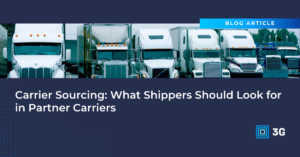
Think Inside the Box: Smarter Packing, Better Shipping
Shipping is complex—choosing the wrong packaging can mean wasted time, extra costs, and frustrated customers. Predictive Packing eliminates these problems by acting as your built-in
Move everything over the road more optimally with the industry’s most powerful planning algorithm
Most complete and connected over-the-road network for LTL, parcel, 3PL, Truckload carriers
Best-in-class packing and shipping for faster fulfillment with fewer errors and less labor
Integration software that quickly connects your business to customers, carriers, partners
Pre-integrated access to ERP and financial applications like NetSuite, Acumatica, or IFS
Pre-integrated access to popular applications, industry specialists, and value-add services
Unlock expert tips and cutting-edge strategies that help shippers, 3PLs, and brokers streamline logistics, reduce costs, and stay ahead in a dynamic logistics industry
Discover real-world success stories where innovative leaders have revolutionized their logistics with 3G’s powerful solutions
Get the latest updates and breakthroughs from 3G, and see how we’re driving the future of shipping and transportation management
Connect with industry experts and peers at events, where you’ll gain the knowledge and insights needed to lead in logistics

Shipping is complex—choosing the wrong packaging can mean wasted time, extra costs, and frustrated customers. Predictive Packing eliminates these problems by acting as your built-in

When it comes to managing your transportation operations, every decision counts. 3G’s Transportation Management’s planning algorithm is designed to help you make the smartest decisions

Drop shipping presents a major opportunity for shippers to diversify their customer base by partnering with multiple retailers and e-tailers. With drop shipping, shippers are

Is your TMS offshoring, or being acquired? Learn the risks and how to stay compliant and secure.

Shippers face setbacks as they scale, from problems with efficiency and organization to compliance and optimization.

For shippers, failing to provide accurate shipping documentation can lead to significant penalties, charge-backs, lost revenue, and compliance risks. Transportation is bursting with regulatory bodies

It’s tempting to choose a carrier with the lowest prices, but the best carrier partnerships factor in more than just rates. They’re critical to operational success and customer satisfaction.

Here are five changes your operation could experience if your TMS provider is acquired by another company.

In today’s world, sustainability isn’t just a buzzword; it’s a crucial part of business strategy. Companies are increasingly committed to reducing their carbon footprint and

Did you know that with the 3G Pacejet Shipping Contract Rates Module, you can simplify rate shopping and unlock significant savings? Finding the best Less-than-Truckload